With Aiko's help, getting on the train was no problem. However, even though we are reasonably intelligent creatures, I'm not sure we could have done it on our own. Our utter failure the night before wasn't feeling so bad after Aiko led us through a maze of people, gates, stairs and finally onto the train platform. Doing all of this is so natural for the people who live here, but with never having any real experience with such an extensive public transit system (I'm looking at you Seattle, with your one freakin' stretch of not-yet-finished light rail) it was a little overwhelming. The funny thing is that once we got on the train, the next stop was Shibuya — the place we were trying to reach last night. This wasn't even the train line that we thought went to Shibuya. When the stop was announced, Aiko gave us a little smile and eye-roll to tease us.
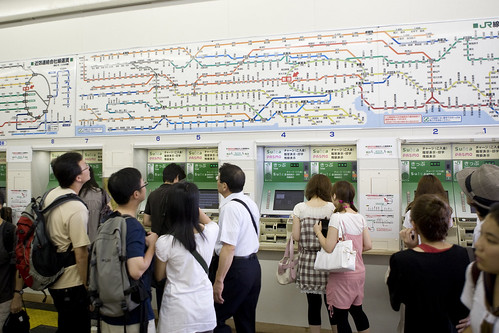
The train itself was fairly comfortable and we were able to chat and watch the city fade away to more open places (a few anyway), lots of industrial areas and finally the suburbs. There was a little kid sitting across from us for a while who was concerned about us. I tried to smile, but probably only scared him.
Once we got to Kamakura, we decided to have lunch before heading to our first stop, the Great Buddha. We were going to find a ramen place, but the one Aiko found didn't have their favorite type so we went instead of tonkatsu fried pork cutlets. It was very good. I rocked the chopsticks and made it through the whole meal without fumbling around or needing a fork. As I was warned by some co-workers, people started lighting up cigarettes around us. To make things worse, the air conditioning in the restaurant wasn't working very well. We had our hand fans going on high.
After lunch, we headed back to the train platform and Aiko found us a taxi driver who could drive us around (everything was in decent walking distance, but all of our calves were hurting from yesterday's climb down the Tokyo Tower) and act as a guide. He was great and if the city of Kamakura isn't paying him to be a tour guide, they should be. He knew just about everything about the city, its history and all the temples we visited.
One thing he told us about the city that neither of us knew was that during World War II a group of people from Kamakura and the three other sites that had been the capital of Japan in the past petitioned the American government not to bomb these areas in order to preseve the temples and culture. The Americans eventually agreed and all the ancient capitals of Japan were spared.
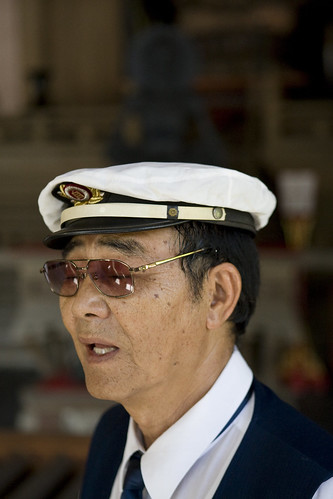
This guy was great and talked the whole time with Aiko translating. It did get a little white-knuckly because he was also driving the whole time as well. The streets in Kamakura are very narrow and wind around like crazy. Every intersection was an adventure. I don't know what visual cues drivers use around here, but when they decide to go ahead and turn through an intersection, everyone else pauses and lets them go even though it seems like right of way is wrong. We decided to try to not watch the other cars too much and save our anxiety levels.
Our first stop was the Kotokuin Temple, home of the Great Buddha. Before entering the main part of the temple, there was a small cistern with large metal cups where everyone was rinsing their hands. Aiko explained that it is customary to wash your hands before entering the presence of the Great Buddha (these same kinds of cisterns were at every temple, so we repeated this each time). It was actually very refreshing to pour the cool water over our hands. It also made entering the temple area feel somehow cooler than the outside.
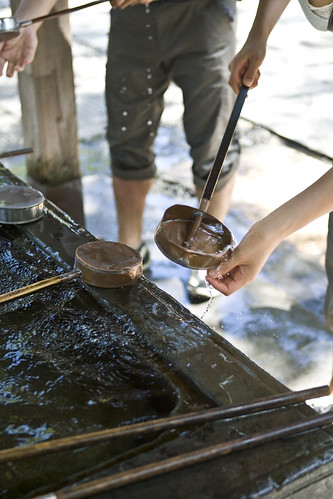
Once inside, the path turned around some trees and we got our first good look at the Great Buddha. It's huge, maybe 30-40 feet tall. Our driver explained that it was built and cast in bronze in place. It was originally gold plated. That would have really been a sight to see. Like at the Asakusa shrine, there was a spot at the foot of the statue where people could toss a coin and make a prayer for good luck. Most of the tourists, including us, went up and made a ham-fisted attempt to do the ritual. You could tell when a local person went up to do it and do it with some belief behind it. There was a little boy who was trying really hard to do it right, but was mostly looking pretty comical. Even his family was laughing at him.

We strolled around a bit and went into the garden area behind the Great Buddha. Even on another hot and humid day, the garden area was relatively comfortable. We browsed a gift shop and found a couple neat souvenirs. We had a little trouble communicating to the shop keeper that we wanted something out of a display case, but with some pointing we got the transaction made.
Our next stop was the Kencho-Ji Zen temple. It is a complex of gates and buildings and is the oldest Zen training monastary in Japan. It really was very beautiful and peaceful. Our guide pointed out the tall wooden beam that we had to step over to enter the grounds and explained that it was a border between the human world and the pure, sacred world. Anger, desire and other evils of the human world are kept out and you leave that all behind when you pass over the wooden beam.
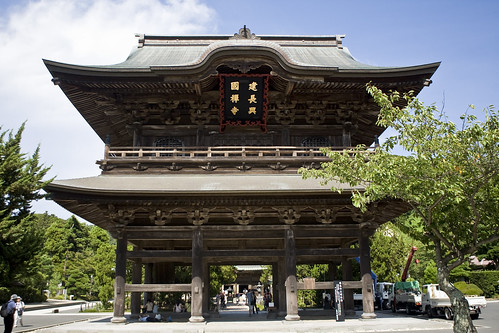
The buildings are beautiful dark wood with little in the way of colorful decoration, on the outside at least. Inside, they are decorated lavishly with lots of color and touches of gold. The most impressive temple, to me, was Hatto, the Dharma Hall. It is dedicated to Senju, who is featured with a staute in front of the Buddha. The Senju statue is carved in his likeness after he had fasted and refused water in order to purify himself (I think I'm getting this correct), so the statue appears to be emaciated. Besides the striking statues of the Buddha and Senju, the other breathtaking feature of this building is the giant dragon painted on the ceiling. The picture doesn't do it justice by any measure.

This location was not mobbed by so many people, so we were able to slowly stroll around and take in the scenery. There were a row of three massive juniper trees, one of which is 750 years old. Next to that is a row of boulders, each one different from the others and all of them full of folds, color and details. Aiko pointed out one that looks like a giant clump of gravel and expalined that it is a famous rock and is featured in the Japanese national anthem. She said that it is the only one that was native to this spot and was found as it was, extruding from the ground.
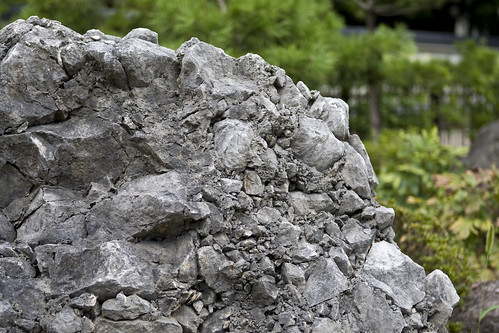
Of the places we visited during this short trip, this temple was my favorite. Unlike the other shrines and temples we saw, this one didn’t feel as much like a tourist spot. There weren’t any shops or signs or mobs of people. It was peaceful, ordered and felt like a temple and not so much like a chance to sell food or memorabilia.
Our last stop was at the Tsurugaoka Hachimangu Shrine. We came in a side entrance and again washed our hands at a cistern. Unlike the Kencho-Ji temple, this shrine is brightly decorated inside and out. Bright reds, yellows and white on every surface. Once we got to the main area, it was packed with people. As we were walking around, an elderly Japanese man came up to us and started talking to us. As he explained, he started learning English after he retired, he is 68 now, because it is used all over the world. He asked us a lot of questions about where we were from and what we thought of Japan. He asked a couple of times if we knew how much larger the US is than Japan. He of course had the answer when we didn’t — 25 times larger. He followed us down the stairs that lead up from the shrine’s main entrance, talking the whole way. I veered off to take some pictures and heard him start to sing the American national anthem to Angie. When he finished, he lifted his hat and said, “Play ball.” After that, he thanked us for talking to him in English and left.
This shrine had a couple vendor stalls along the pathway leading to the to main building. They were mostly selling drinks or treats, except one that was selling masks of cartoon characters. Very odd.
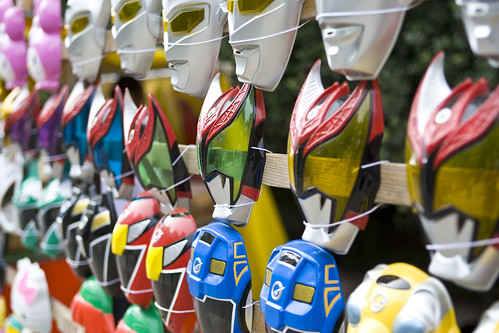
Our driver/guide took us back to the train station and we headed back to Tokyo. The train was more crowded going back, so we had to stand much of the way. Once we got back to Shinjuku station, Aiko led us down to the subway to ride back to our hotel — only one stop away and well within walking distance, but she wanted to make sure we got the entire Tokyo transportation experience.
She and Sally came up to our hotel room to see our Olympic tickets, which Aiko attempted to steal.
After we said our goodbyes and thanked her and her husband for their generosity during our stay, we intended to head back out and again try to make it to Shibuya. Well, two days of walking and walking and walking along with the hot weather had us both falling asleep in our chairs, so we decided to stay in and get everything ready for our flight to Beijing the next morning. We are leaving fairly early and we didn’t want to rush. Besides, we’ve both decided that this trip has only given us a small taste of Japan and that we need to come back for a much longer stay soon. We can hit Shibuya then.